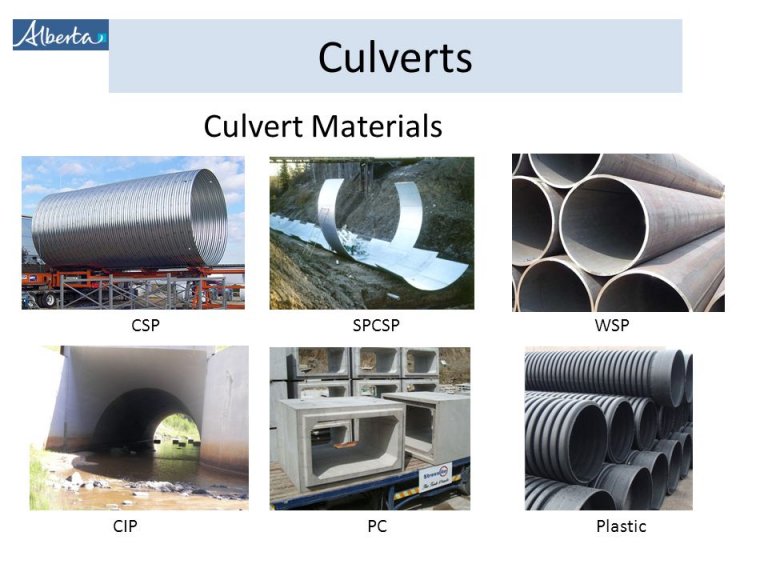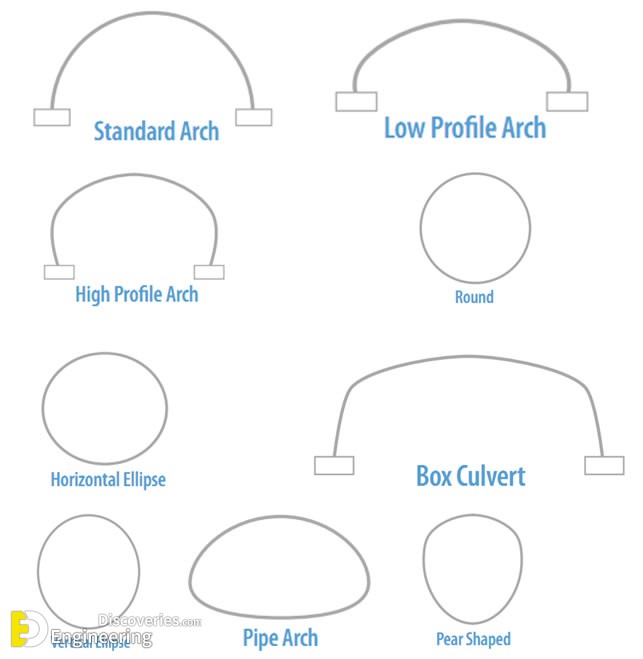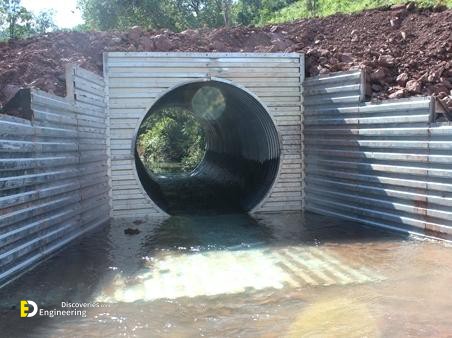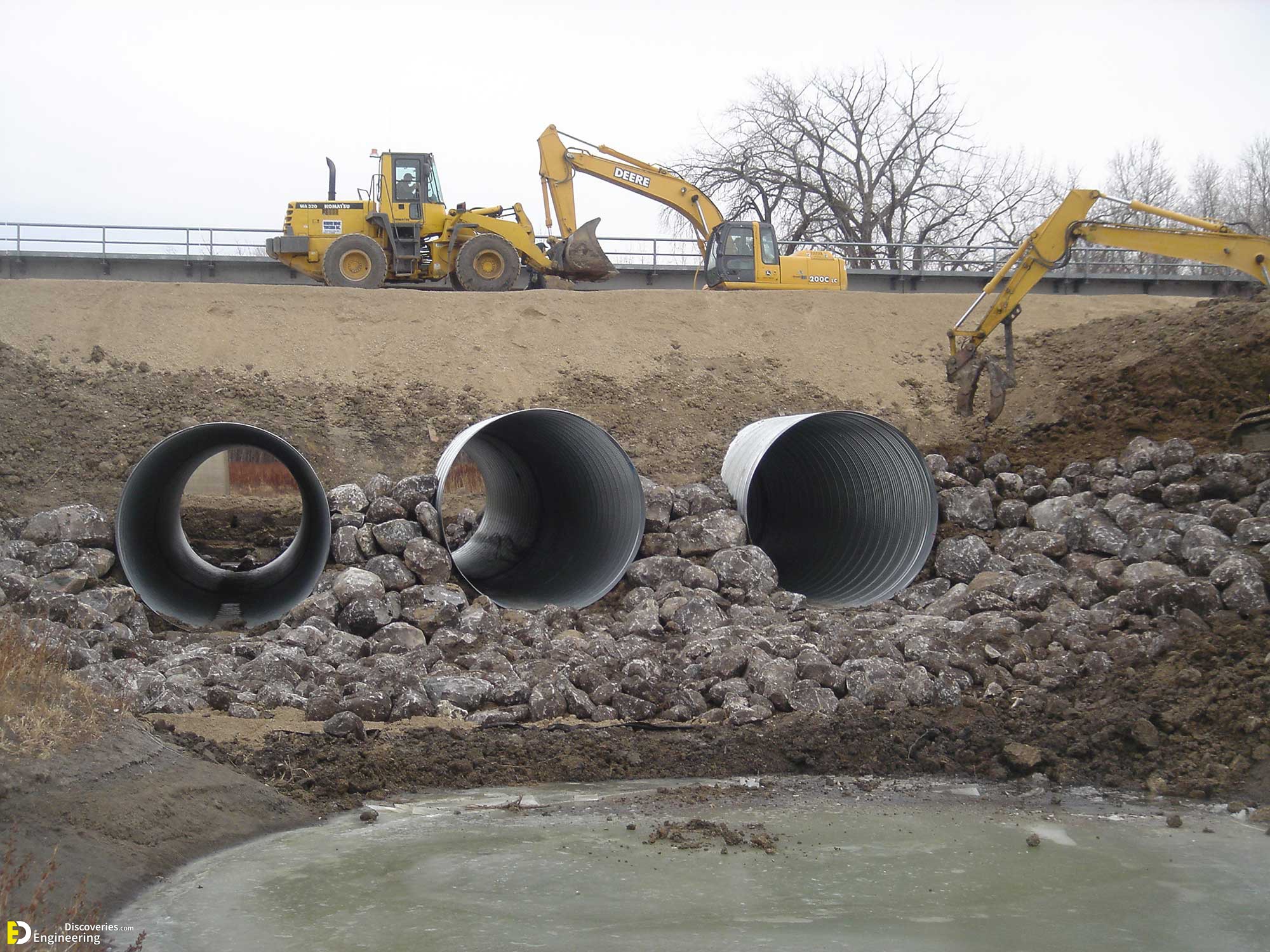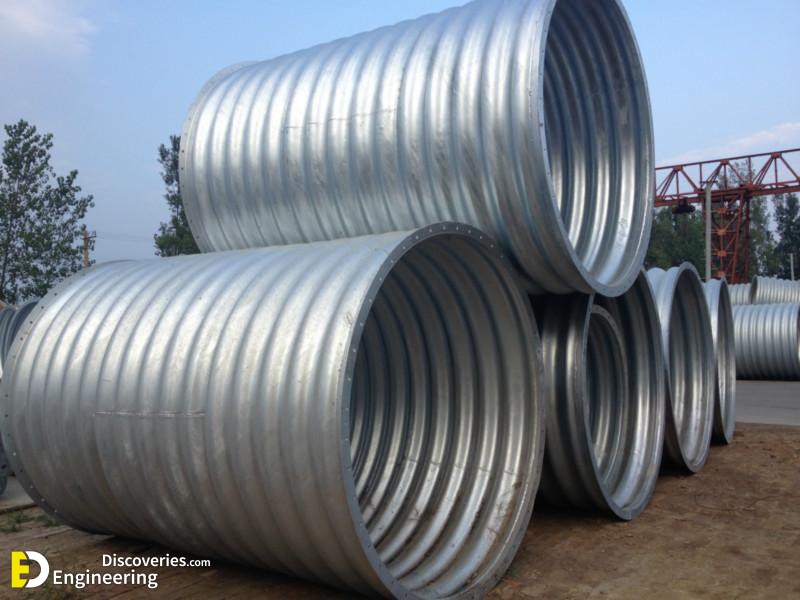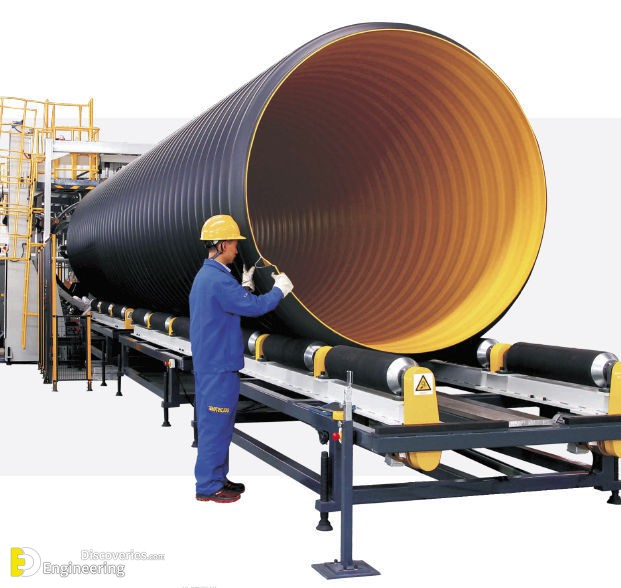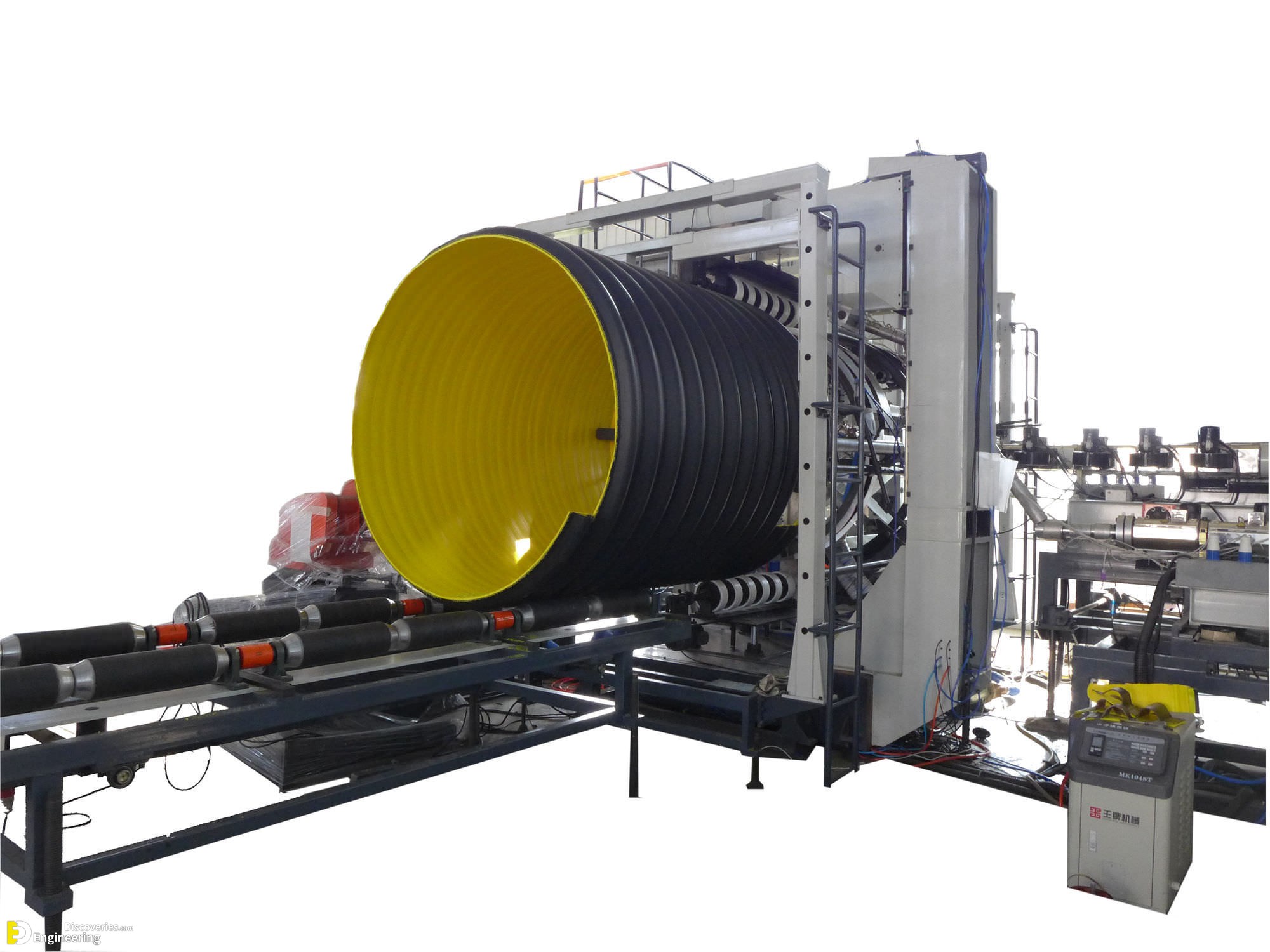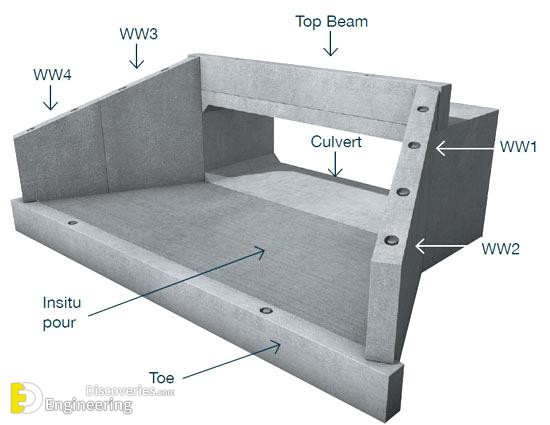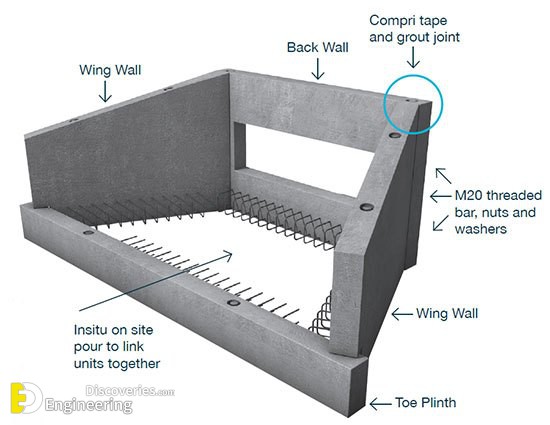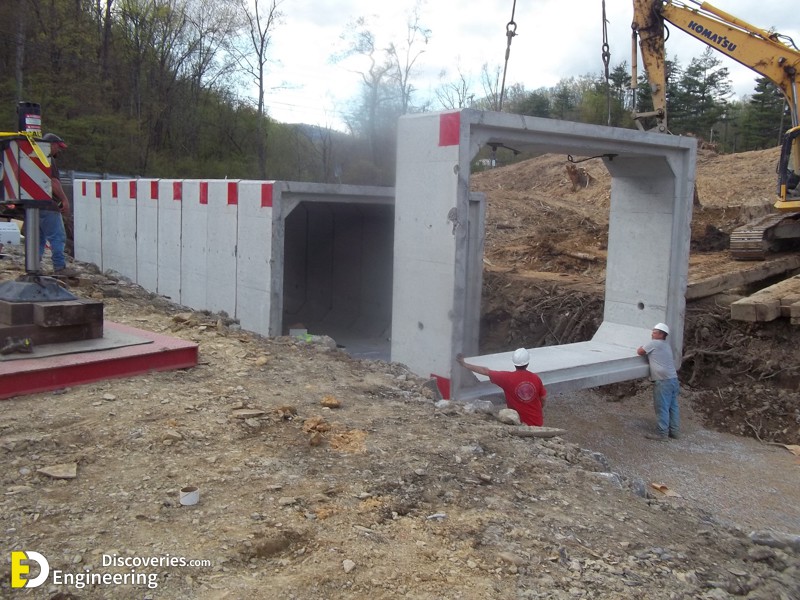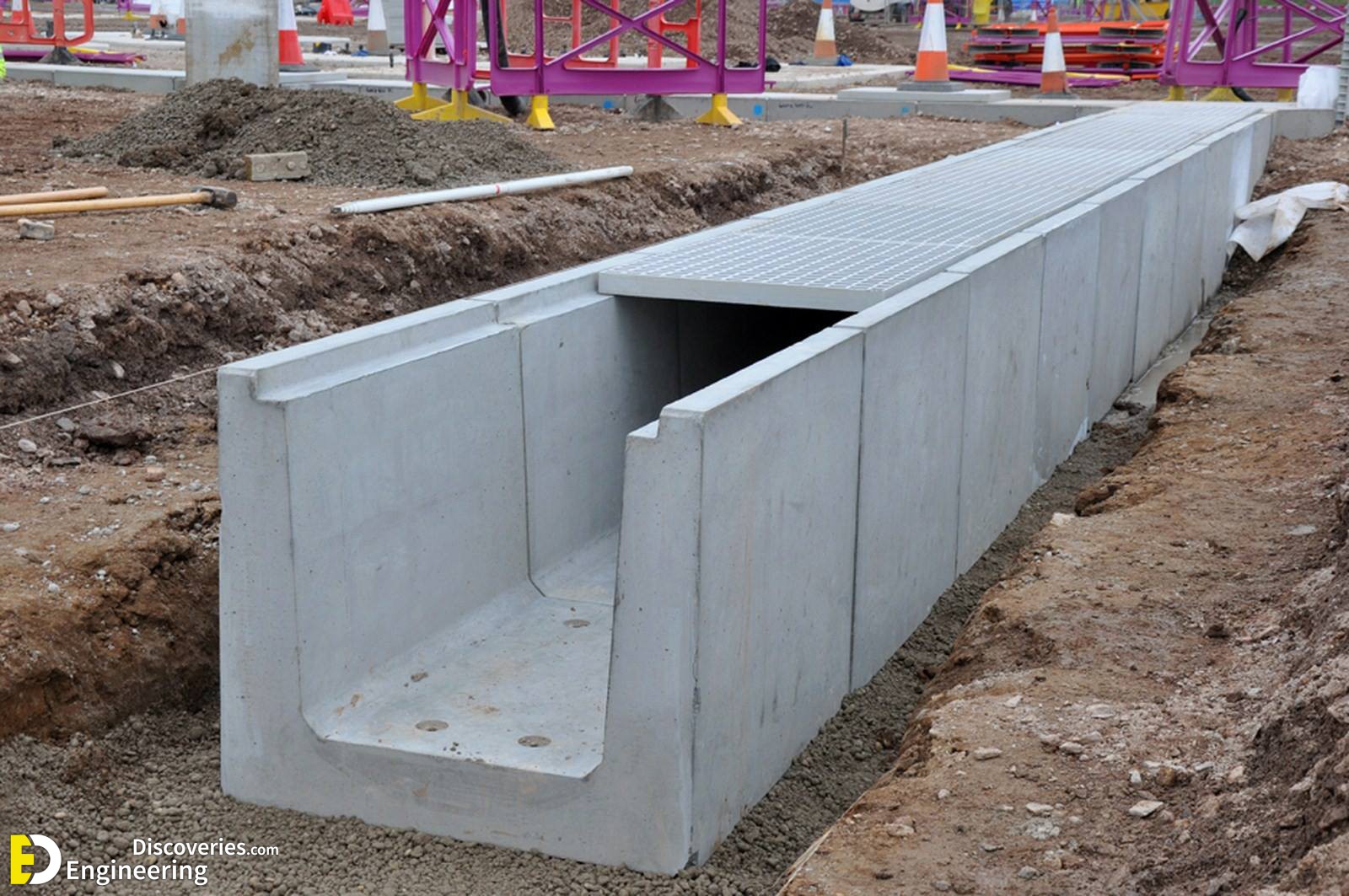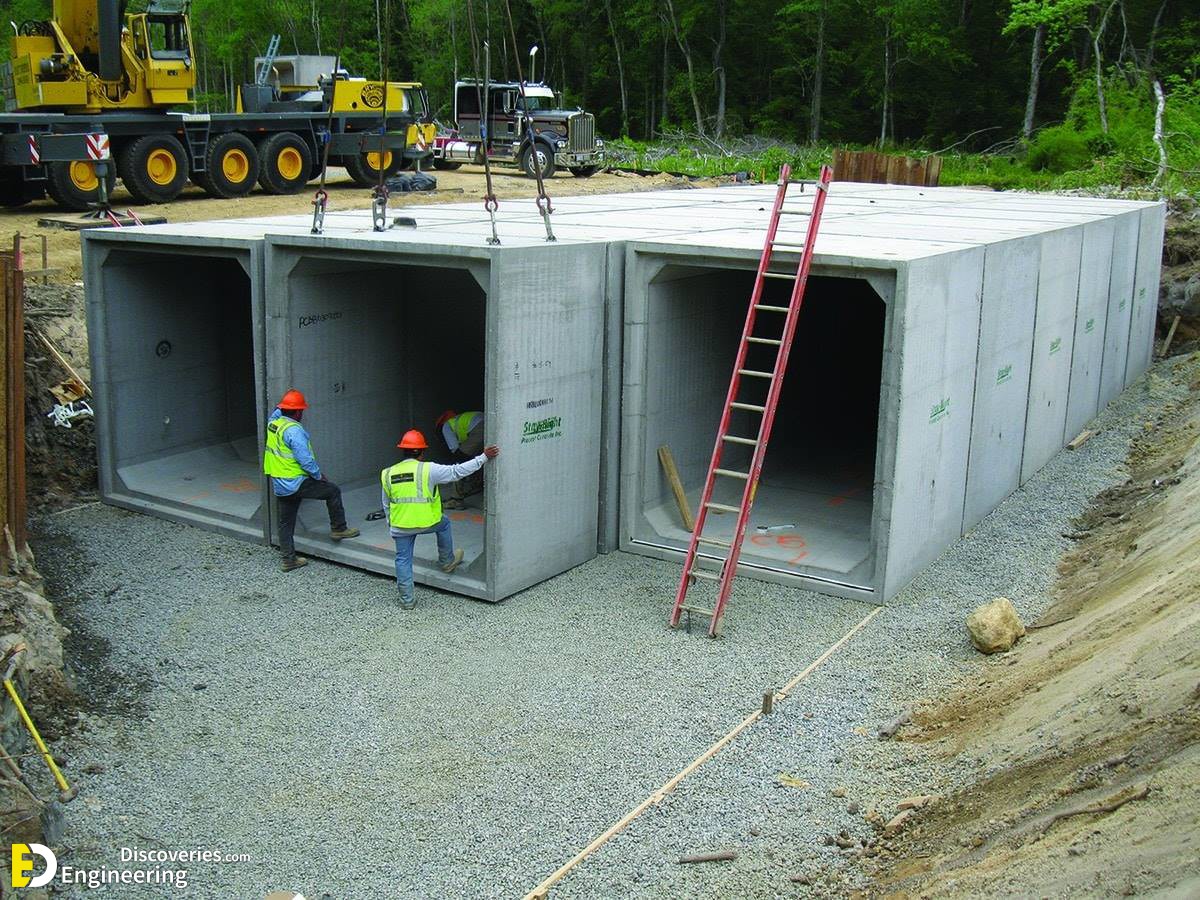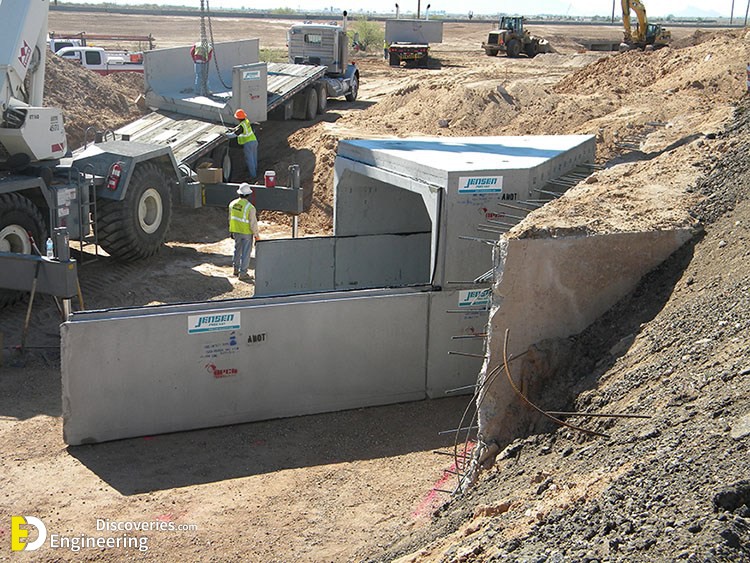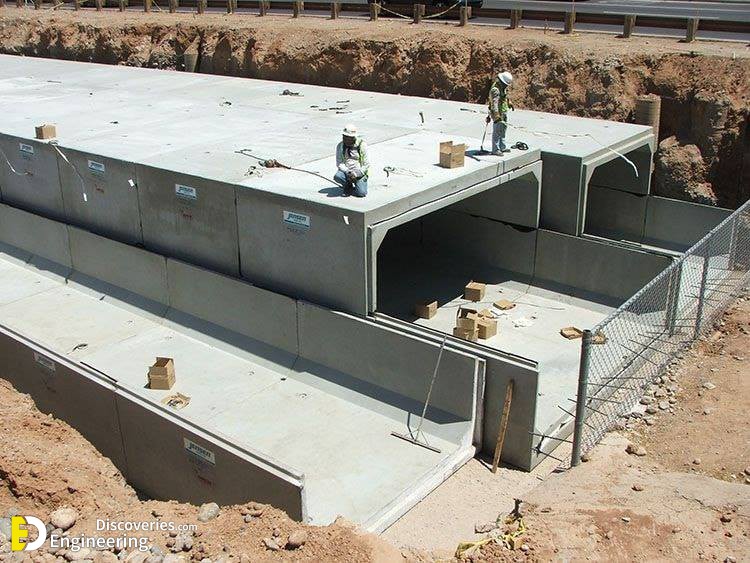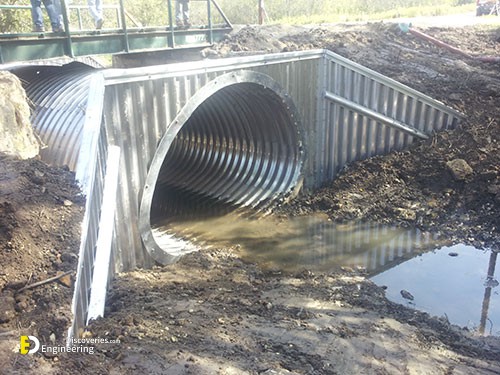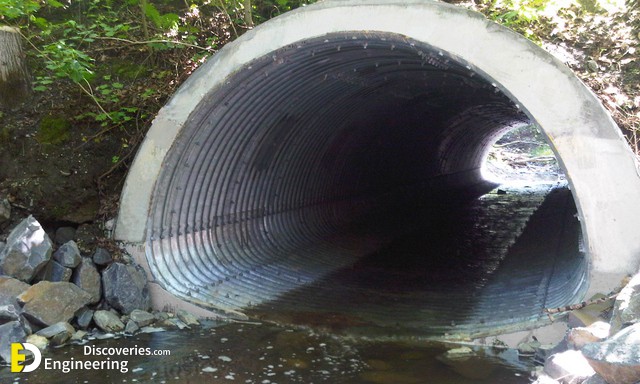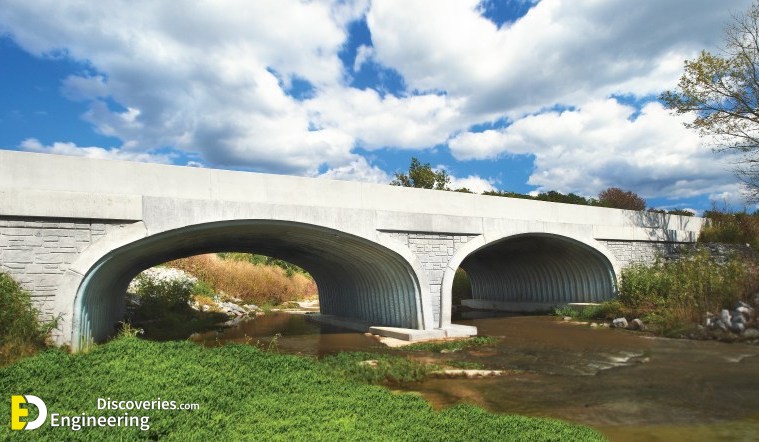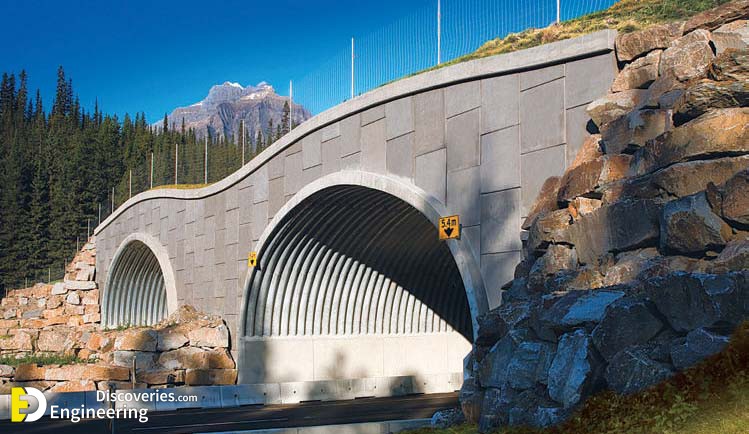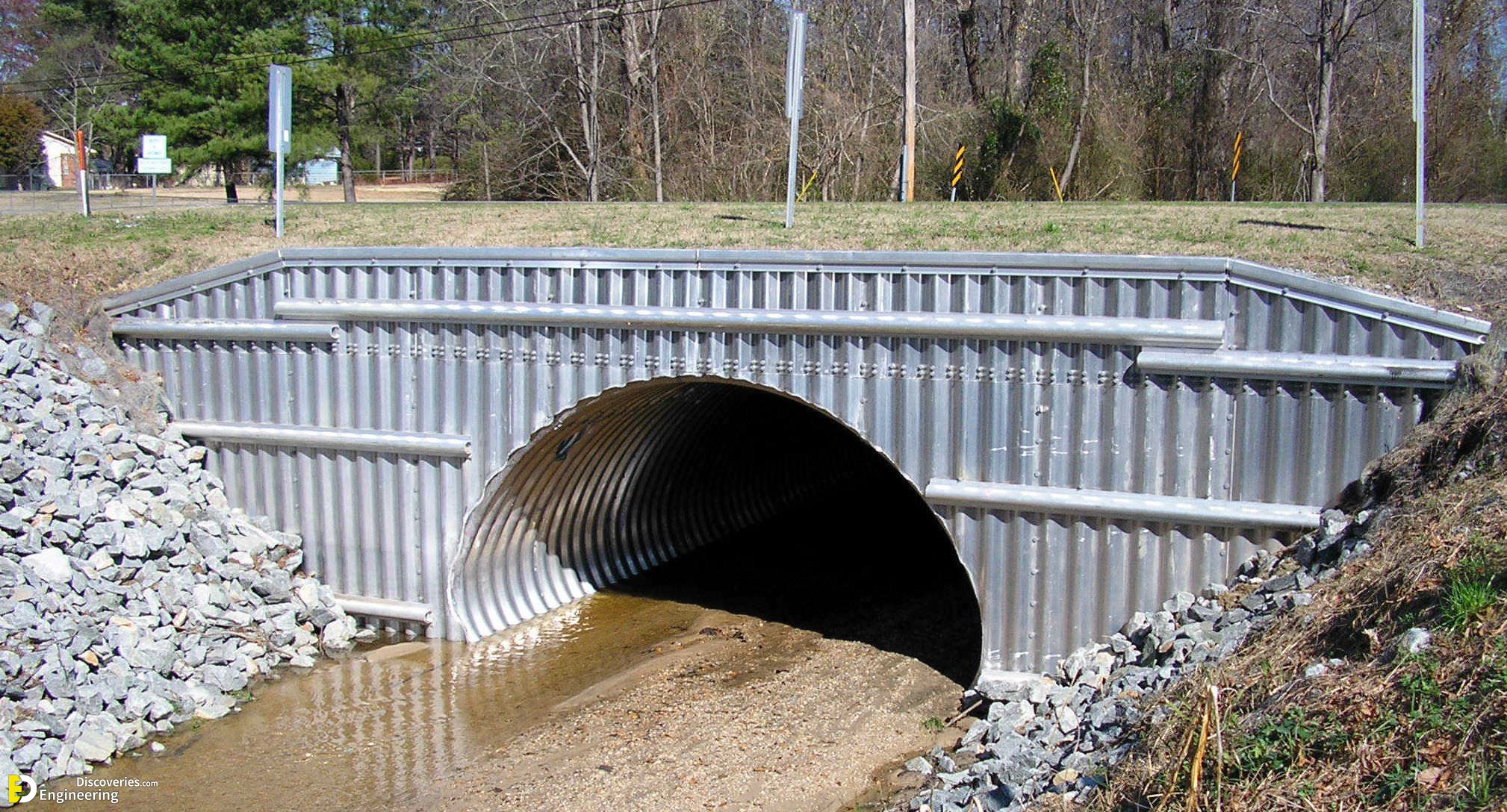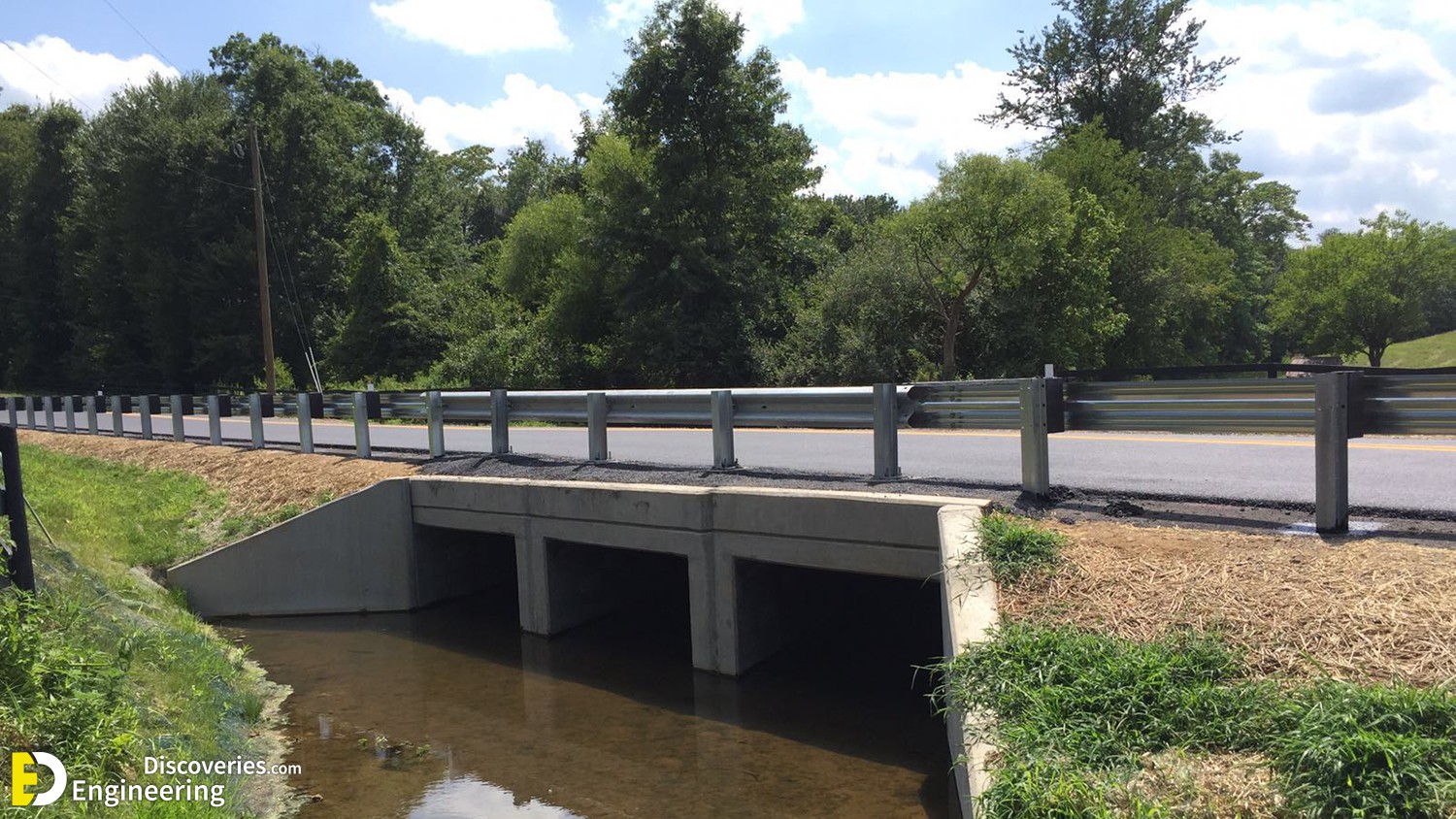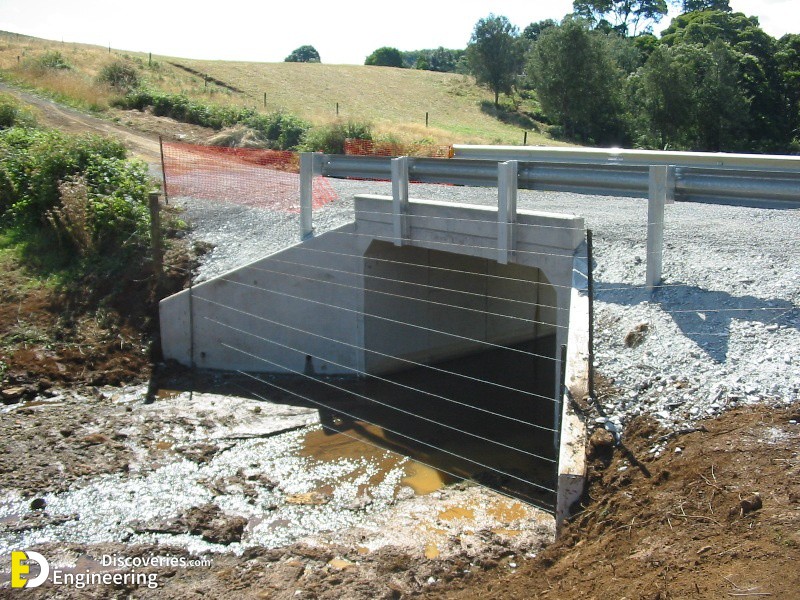What Is Culvert?
A culvert is a structure that allows water to flow under a road, railroad, trail, or similar obstruction from one side to the other side. Typically embedded so as to be surrounded by soil, a culvert may be made from a pipe, reinforced concrete or other material.
1- The culvert span is less than 6 meters.
2- Culvert is design for the height of fewer than 6 meters.
Materials for Culvert Construction
Culverts are like pipes but very large in size. They are made of many materials like
1- Concrete
2- Steel
3- Plastic
4- Aluminum
6- high-density polyethylene
In most cases, concrete culverts are preferred. Concrete culverts may be reinforced or non-reinforced. In some cases, culverts are constructed in a site called cast in situ culverts. Precast culverts are also available. By the combination above materials, we can also get composite culvert types.
Location of Culverts
The location of culverts should be based on economy and usage. Generally, it is recommended that the provision of culverts under roadway or railway is economical. There is no need to construct separate embankment or anything for providing culverts. The provided culverts should be perpendicular to the roadway. It should be of greater dimensions to allow maximum water level and should be located in such a way that flow should be easily done. It is possible by providing the required gradient.
1- Pipe Culvert (Single or Multiple)
Pipe culverts are widely used culverts and rounded in shape. The culverts may be of single in number or multiple. If a single pipe culvert is used then a larger diameter culvert is installed. If the width of the channel is greater than we will go for multiple pipe culverts. They are suitable for larger flows very well. The diameter of pipe culverts ranges from 1 meter to 6 m. These are made of concrete or steel etc..
2- Box Culvert (Single or Multiple)
Box culverts are in a rectangular shape and generally constructed by concrete. Reinforcement is also provided in the construction of box culvert. These are used to dispose of rainwater. So, these are not useful in the dry period. They can also be used as passages to cross the rail or roadway during dry periods for animals etc. Because of sharp corners, these are not suitable for larger velocity. Box culverts can also be provided in multiple numbers.
3- Pipe Arch Culvert (Single or Multiple)
Pipe arch culverts mean nothing but they look like half-circle shaped culverts. Pipe arch culverts are suitable for larger water flows but the flow should be stable. Because of arch shape fishes or sewage in the drainage easily carried to the outlet without stocking at the inlet or bottom of the channel. This type of culverts can also be provided in multiple numbers based on the requirement. They also enhance beautiful appearance.
4- Arch Culvert
The arch culvert is similar to pipe arch culvert but in this case, an artificial floor is provided below the arch. For narrow passages, it is widely used. The artificial floor is made of concrete and arch also made of concrete. Steel arch culverts are also available but very expensive.
5- Bridge Culvert
Bridge culverts are provided on canals or rivers and also used as road bridges for vehicles. For these culverts, a foundation is laid under the ground surface. A series of culverts are laid and pavement surface is laid on top of this series of culverts. Generally, these are rectangular-shaped culverts these can replace the box culverts if the artificial floor is not necessary.
Advantages Of Culvert
1- Prevent Erosion.
2- Prevent Flooding.
3- Allow Water to Flow Unobstructed.
4- Divert Water for Farming/Engineering Purposes.


